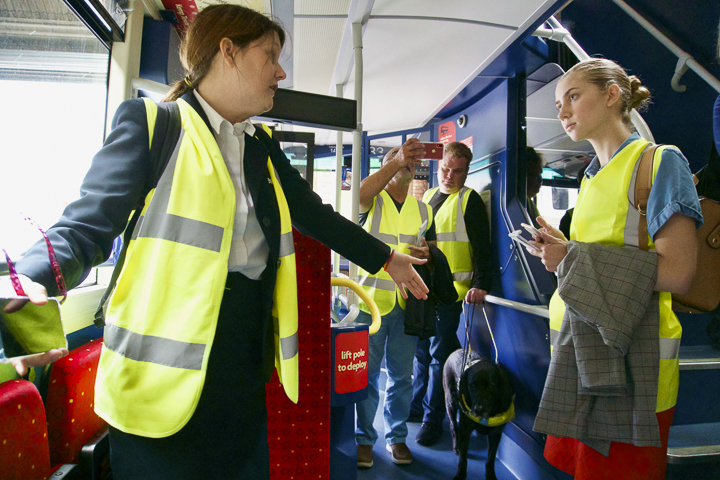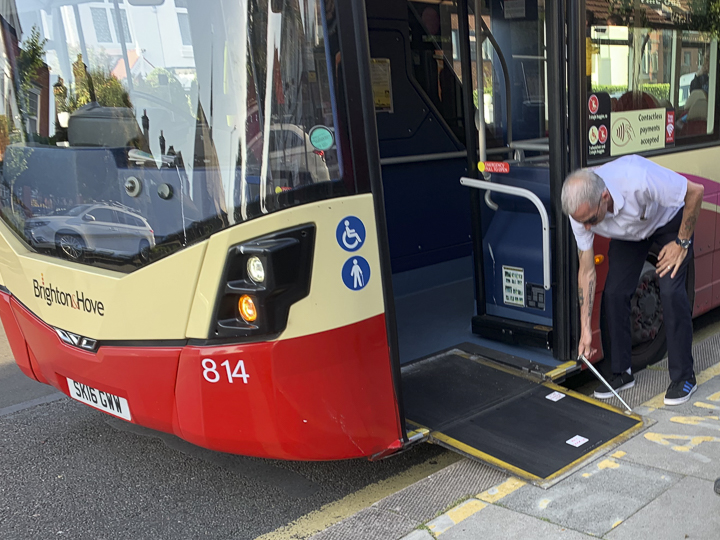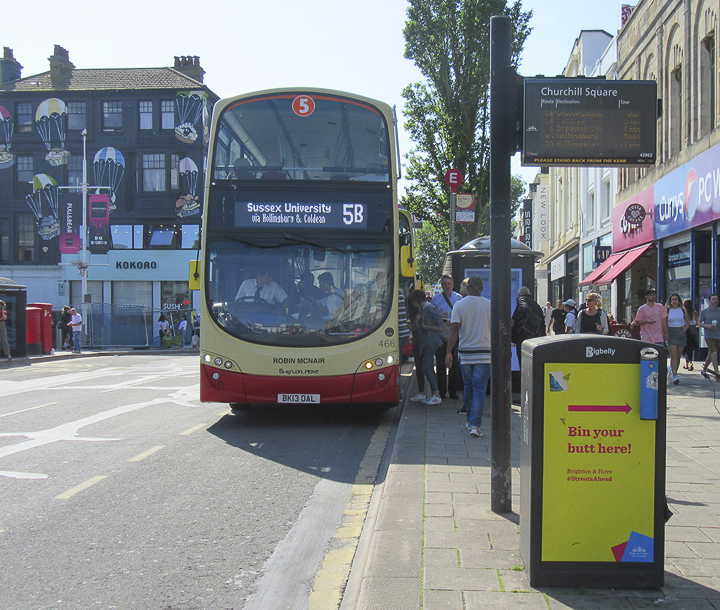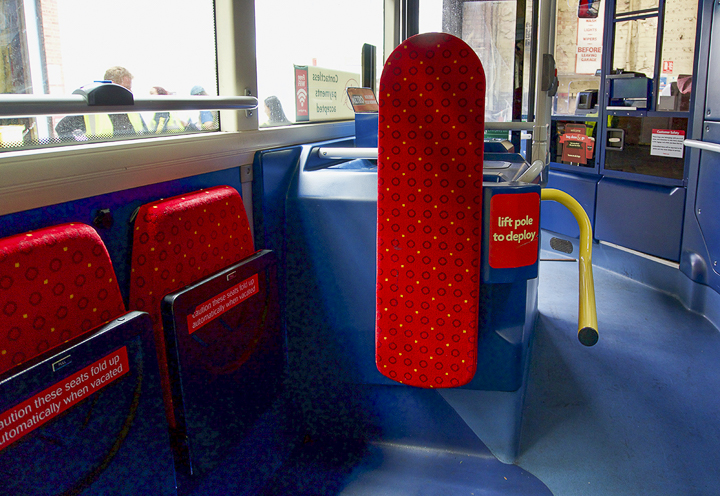Brighton buses focus on easing accessibility

Editor’s note: This is the first in an ongoing series on public transportation and accessibility in Brighton, England. These reports were compiled by Lamar University study abroad students.
About a decade ago, Victoria Garcia was going through her daily life working in customer services at the Brighton & Hove bus company. Then, she was offered a role that no one in the U.K. bus industry had.
“We were like every other company, we were offering customer services, help, and transport, but we weren’t being the best that we possibly could to help passengers that might require extra assistance,” she said. “And it’s not just passengers that need extra assistance — it applies to any passenger with an accessibility requirement.”
Garcia said that she was made aware of some of the issues customers were having on the buses through her customer service role, but it wasn’t until her managing director gave her the job of accessibility and communities manager that she could start to make changes.

Accessibility involves disabilities as well as every day needs a person may have — i.e., parents with strollers, tourists, etc. — anything that makes riding public transportation easier.
Garcia had firsthand experience with travelling on the buses with a disability.
“What a lot of people don’t realize is that I have invisible disabilities,” she said. “I’ve got a rare heart condition that only 200 people in the U.K. have. I’ve got a heart machine — an ICD defibrillator implanted.”
Sixteen years ago, Garcia was running a construction company when she had an accident.
“I was climbing some steps and my defibrillator fired,” she said. “I (fell) back and I hit my head, and I had a traumatic brain injury and traumatic brain damage.”
Garcia was unable to work or leave her house by herself for the next five years.
“I was getting six to eight seizures a day, sometimes up to 20, and had two or three blackouts a day for five years,” she said. “And then I woke up one morning — the doctors had tried everything, no matter the medication, nothing was working — and I went a whole day without a seizure, and I thought, ‘Well, that’s good.’”
Gradually, Garcia began going out on her own again. She said she still has five to six seizures a month, but that she’s able to work and live on her own.
“I have a bit of an understanding, not much, of what it’s like using the buses with a disability, because I’ve had to do all of that — traveling on the bus for the first time on my own, traveling on the train for the first time on my own, going up the street for a pint of milk for the first time — so that’s why I’m passionate about accessibility initiatives,” she said.
Garcia said the company started by looking at the numbers — at how many people in the U.K. are living with disabilities.
“About one in four people in the U.K. have a disability like myself,” she said “That’s how we started our programs.”
Through her role in customer services, Garcia met Daniel Walker, who has dealt with limited visibility since birth. He, along with other customers, gave the company feedback on how to make travelling on the bus easier for everyone.

“We started producing large-print bus times,” she said. “Now, we do hundreds of the large prints — they go out on the mailing list, to the eye hospital and they’ve become very popular, so now we’ve gone for larger print across all of our marketing.”
All of the Brighton & Hove buses are “talking buses,” meaning that they announce each upcoming stop. They also have looping systems, which people with hearing aids can connect to to hear upcoming bus stops and announcements.
“We’ve also widened the space for wheelchair users and we have manual ramps,” Garcia said. “We used to have electric ramps, but if the electric ramp breaks down, how does the wheelchair users get off the bus if there’s an emergency? So, we went back to the manual ramp.”
In addition to audible announcements, each of the Brighton & Hove buses has a destination screen so people can see where the next stop is. Currently, the screens are black with orange text, but Garcia said the company is looking to change that.
“We want to change them to white screens so that people with dyslexia can read them better,” she said.
Every initiative has been developed with guidance from local organizations and charities, Garcia said.
“We’ve developed, with charities and organizations, an assistance card which is particularly helpful for hidden disabilities,” she said. “It’s been designed by the charities and there’s no branding on there of Brighton & Hove buses — we’ve done that deliberately so that they can be used anywhere.
“It’s a black and yellow card, because it’s the most accessible colors to use, and it has a cut out on the side so the person holding it knows which way the card goes. On the back, it can hold a name and an emergency contact.”
The assistance cards alert the bus driver and other passengers of potentially hidden disabilities, so that they may be aware of any special needs of a customer.
Since implementing the assistance cards, Garcia has become a senior policy adviser to the U.K. Department of Transport.
“On Monday and Tuesday, I go up to the Department of Transport and work on changes in laws to make things better and more accessible,” she said. “We’re working on a national assistance card that can be used anywhere and it’s been because of the feedback from customers.”

The bus company is also working on an anti-hate crime campaign with the Sussex county police. Garcia said that every initiative put forth by the company ensures the equality of every person, no matter the disability they may or may not be dealing with.
Garcia said that there’s still plenty more things that the bus company needs to work on to ensure the accessibility of every customer, but that with each day and with feedback from customers, it’s becoming easier to implement changes.
“We realized very quickly that it’s not just about disability, it’s about accessibility, which affects 100 percent of our passengers,” she said. “Because at some point, somebody may be pregnant, they may have sprained their wrist, broken their leg, grown older and developed dementia — at some point or another, every one of us will have an accessibility requirement. We’re looking at ways to make things better.”
